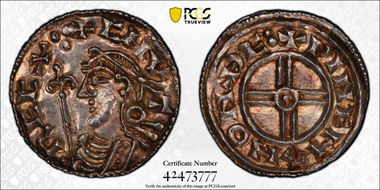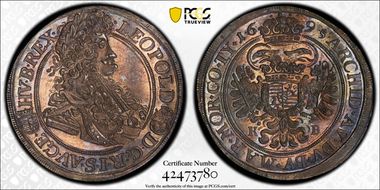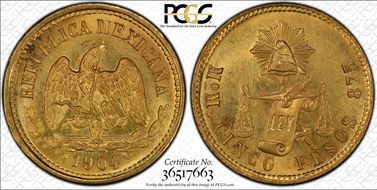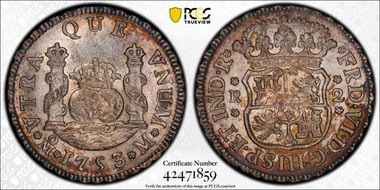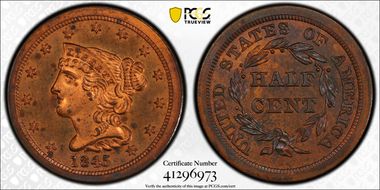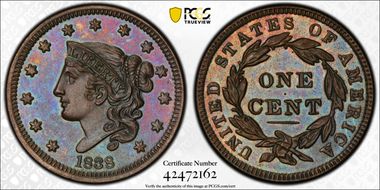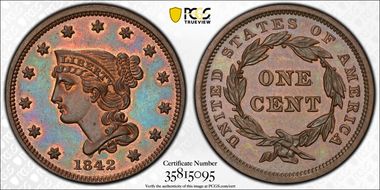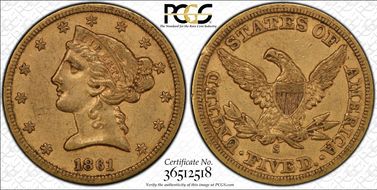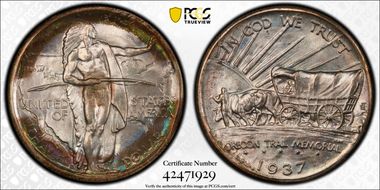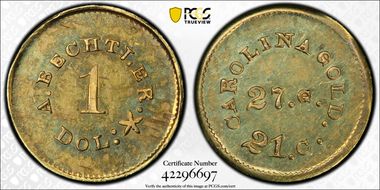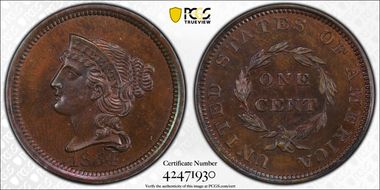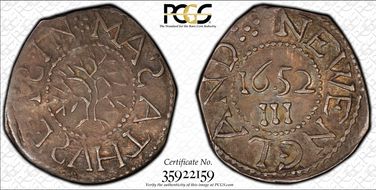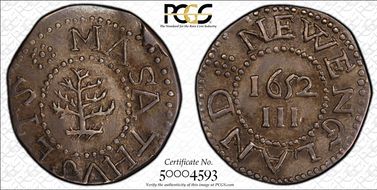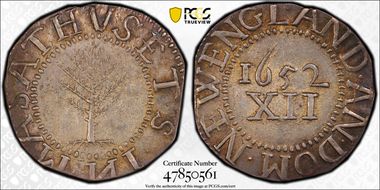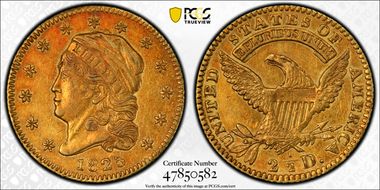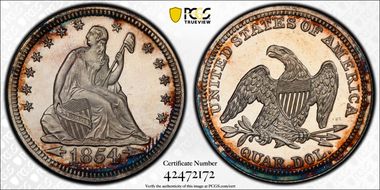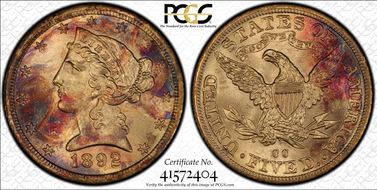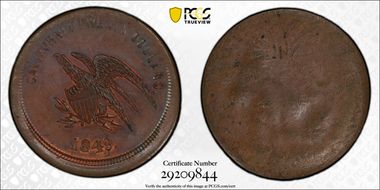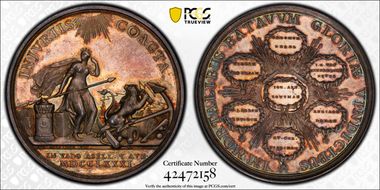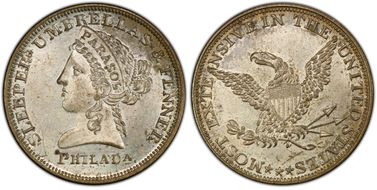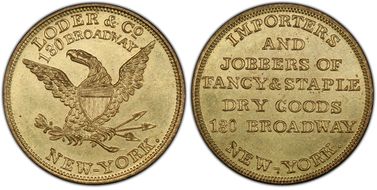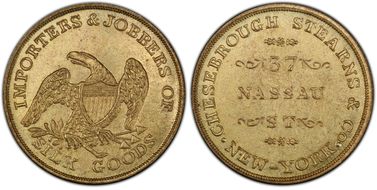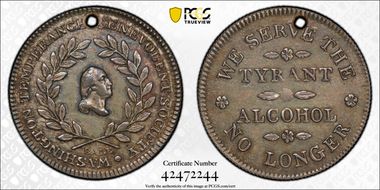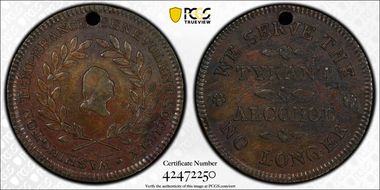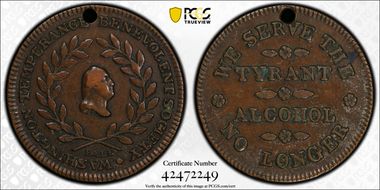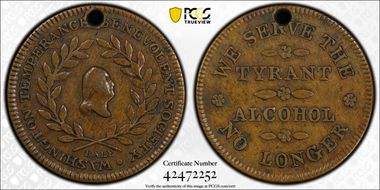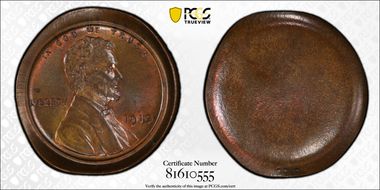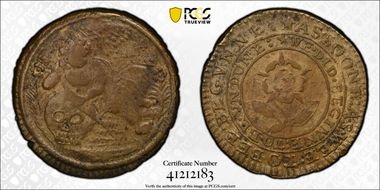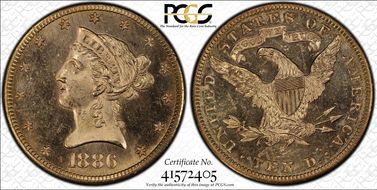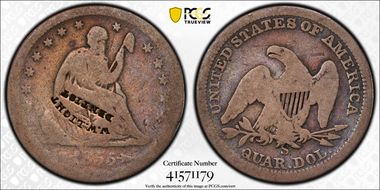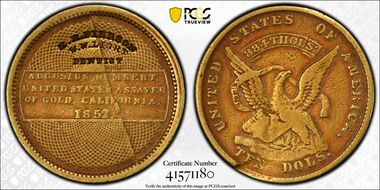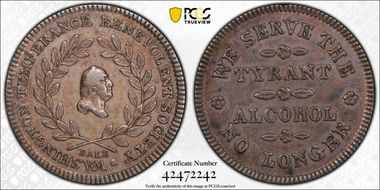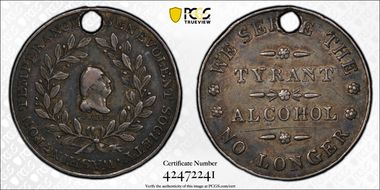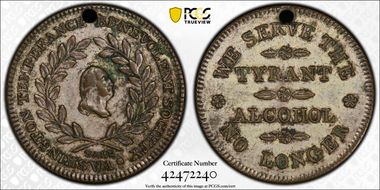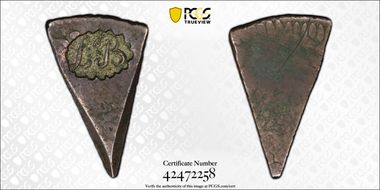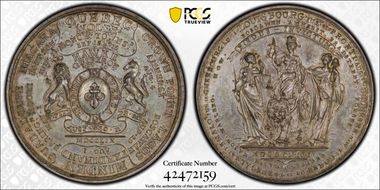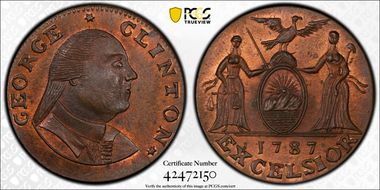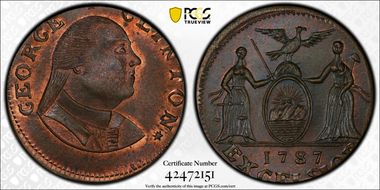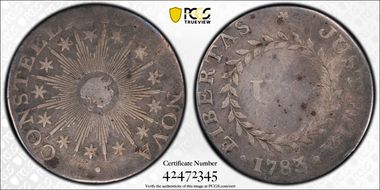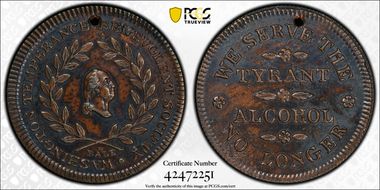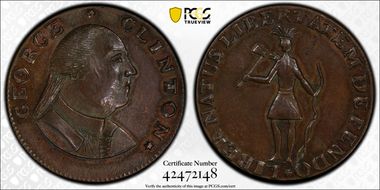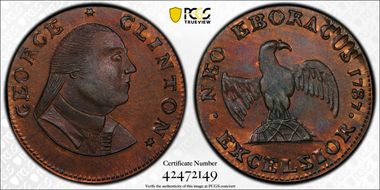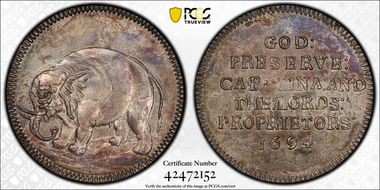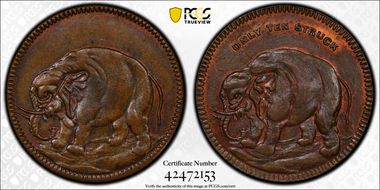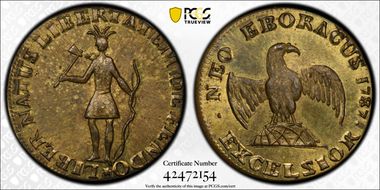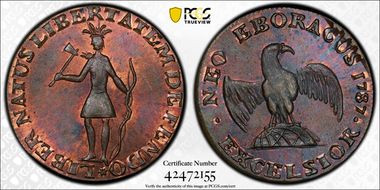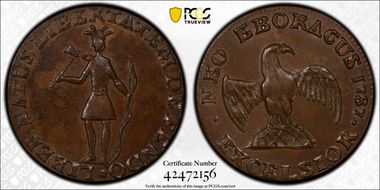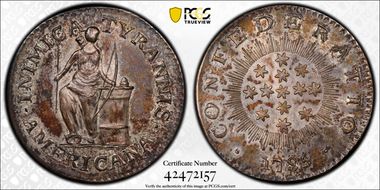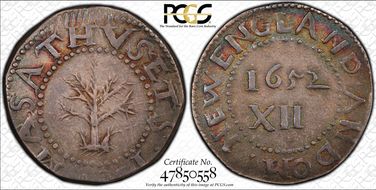Regulated 的钱币相册
One of two or three known examples. Julius Popper was a Romanian-born adventurer who traveled to Argentina during the gold rush of the 1880s. He put together a band of mercenaries, called "Lavaderos del Oro del Sud" (Goldwashers of the South), and traveled to Tierra del Fuego, where he discovered gold. While camped at el Paramo, Popper struck one and five-gram gold coins from crudely made dies. These pieces are incredibly rare today, with only a handful known of each denomination. The present piece was struck on a very crude planchet, probably fashioned out of a placer nugget, this unrefined gold contains a fair amount of silver, which has toned dramatically in shades of blue, green and magenta. Essentially as made. Ex-Eliasberg.
Finest Known Small Planchet Pine Tree Shilling of any variety. While Small Planchet Pines are plentiful, there are well under ten known examples in mint state. I have owned both MS64s, and this is the example that I kept for my collection.
An exceptional early proof Large Cent that I purchased housed within a collector's box made for early 20th Century dentist and collector, Dr. French. Virtually as made, with plenty of red and beautiful oil-slick toning.
The single finest 1854 proof Large Cent. Boasts an incredible amount of red.
The 1846 dime has long been considered a rarity in any format, with a mintage of 31,000 pieces, ten of which are believed to have been struck as proofs. This is the single finest of the lot.
Tied finest. An exceptionally original example of this rare early proof that was first discovered around ten years ago.
Unique. Probably the single most dramatic error on an early U.S. gold coin. The present piece was in Art Kagin's collection before being sold to the great error specialist Henry Hilgard. Completely original and dripping with luster.
High Relief Lincoln Cent - One of two known white-metal 1942 experimental Lincoln Cents struck from an obverse die that measures 20% higher relief than the regular issue examples. Mint records suggest that these pieces were part of the process that eventually produced the "WAR SERIES" experimental dies. This is among the very last true patterns available to collectors.
ex-Wurtzbach/Reed Hawn. Overstruck on a cut down Oak Tree Shilling, with some of the tree visible as undertype. Very nicely centered, with absolutely full legends. An exceptional amount of luster for the grade,
ex-Garrett. The Pine Tree Threepence is a tough coin in any grade. This example is one of the two finest seen of any variety, and has plenty of luster and virtually full legends.
The only dramatic toner in the Saddle Ridge Hoard, and one of only a handful of Carson City coins in the group. Exceptionally clean for the assigned grade and super cool...
Unique. Now understood to be a Mint product and not a private restrike. One of the few pattern coins known with a mint mark. Probably made around 1840/1841 to test the mintmark's new location on the reverse.
Unique. Discovered in the mid-19th century, this is the earliest pattern for a circulating U.S. coin. The obverse tests the hub used to create the Fugio obverse die, while the reverse is a test of the hub used to make the die for the rare American Congress pattern, which was the original reverse design for the Fugio, and was probably abandoned because of its complexity. An exceptionally important piece of Americana that is unknown to most collectors.
Unique. Cincinnati Mining & Trading Company is one of the great rarities of the entire Pioneer Gold series, with only THREE examples in private hands of any of the gold issues. The present example is unique as a uniface reverse die trial, and the finest of the three known $20 patterns. Essentially as made, with hints of red and copious die polish.
Struck in early 1807, but dated 1797. Only a handful of original silver specimens remain of this important medal struck at the early U.S. Mint for jeweler Joseph Sansom. An example of this medal was presented to Thomas Jefferson, prompting him to press the mint to hire its engraver, John Reich, who would go on to design the Classic Head and Capped Bust coinage.
Loads of bright silvering left. It almost makes me want a parasol.
Probably 1850s, not 1860s. These occasionally come in Gem.
Lovely fresh surfaces.
Unique. A uniface Lincoln Cent die trial from 1910. One of very few Lincoln Cent patterns available to collectors.
Unique. A uniface Lincoln Cent die trial from 1910. One of very few Lincoln Cent patterns available to collectors.
(c. 1584) The single finest Raleigh Plantations Token of either variety, boasting fresh, uncorroded surfaces, and a much better strike than is usually found on one of these. The design is one of my favorites, with a putti reclining on a stylized human skull, and bears a great legend: AS SOONE AS WEE TO BEE BEGVNNE, WE DID BEGINNE TO BE VNDONE. Enjoy the anomalous Elizabethan spelling...
The only fully prooflike coin in the entire Saddle Ridge Hoard. Exceptionally well-struck and choice for the grade.
Unique. An 1852/1 Humbert $10 counterstamped by H.H. Pierson and W.W. Light in Sacramento during the California gold rush. W.W. Light was a dentist, who also engraved dies for J.S. Ormsby's private gold coinage.
One of perhaps two known examples. Julius Popper was a Romanian-born adventurer who traveled to Argentina during the gold rush of the 1880s. He put together a band of mercenaries, called "Lavaderos del Oro del Sud" (Goldwashers of the South), and traveled to Tierra del Fuego, where he discovered gold. While camped at el Paramo, Popper struck one and five-gram gold coins from crudely made dies. These pieces are incredibly rare today, with only a handful known of each denomination. The present piece is lustrous and devoid of marks, it is struck in placer gold which contains traces of silver, and has developed subtle but attractive peripheral toning.























